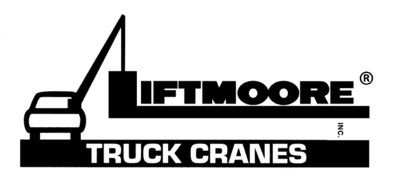Hydraulic System for 12V DC Electric Cranes
The hydraulic system consists of the hydraulic pump, manifold, solenoid valves, cylinders, motors, tubing and hoses. Hydraulic power is generated by the electrically driven
hydraulic pump on the outside of the housing. The hydraulic system is plumbed in series so that more than one function can be operated simultaneously.
The hydraulic pump assembly consists of a DC permanent magnet electric motor, pump and reservoir.
The motor is activated by the pump solenoid. The solenoid is energized by the pendant control whenever a hydraulic function is activated.
The pump provides fluid pressure to power hydraulic functions. The system incorporates an adjustable relief valve to prevent damage that can be caused by over pressurizing the system.
Fluid is drawn from and returned to the reservoir. Servicing the hydraulic pump consist of maintaining the oil level. The reservoir should be kept as full as possible to prevent condensation from forming inside the tank. Also ensure the oil is not contaminated by water, dirt, rust, etc. See crane specification sheet for hydraulic oil type.
Solenoid Valves
Each hydraulically operated function is controlled by a 4-way, 3-position open center solenoid valve. It is electrically operated and spring biased to center. A manual operation button is incorporated in the coil-retaining nut. Valves are mounted to the series manifold.
Cylinders
Most hydraulic cylinders are double acting cylinders and utilize an integrally mounted counterbalance valve and pilot operated check valve. Refer to the cylinder drawings in your owner's manual for specific information.
All cylinders use a counter-balance load holding cartridge valve on the extend port.
This valve performs 3 functions:
- Controls the rate of decent when lowering the load
- Keeps load from falling in the event of sudden loss of system
pressure, such as when a hose bursts - Acts as a relief valve to prevent damage from induced load or
thermal expansion
It allows free flow to extend, then blocks flow until opened by pilot pressure to the retract port or when the relief pressure is reached.
Some cylinders utilize a pilot operated check valve on the retract port to prevent the cylinder from creeping out under no load conditions. This valve allows flow into, but prevents flow from the retract port, thus hydraulically locking the cylinder until opened by pilot pressure to the extend port.
Motors
The hydraulic motor used by the rotation drive is a high-torque, low-speed constant displacement motor.
Manual Operation
If electrical problems occur the solenoid valves may be operated manually by depressing the manual operation button incorporated in the coil-retaining nut. Using a blunt object such as a bolt or screwdriver handle may be required to assist operation if high pressures are needed. Refer to the manifold drawing for function valves and directions.
If possible, activate the pump by activating a hydraulic function on the pendant. If this does not work, then energize the pump solenoid using a jumper from the hot side of the solenoid to the coil post where the WHT/BLK wire is connected. If this fails also then battery voltage can be applied directly to the pump motor.
If hydraulic power is lost while a load is suspended, the load can be lowered by decreasing the setting on the counter-balance valve. This should only be done in extreme cases. The valve must be reset before the crane is returned to use.
Warning!
The boom may fall if the adjustment is made too fast. Do not stand where the boom may hit you if it falls. Serious injury or death may result.
Warning!
The area between the boom and the cylinder, the boom and the housing, and the cylinder and the housing will change as the boom position changes and could form pinch points. Do not position any part of your body in these areas as it may be pinched or crushed as the boom lowers.
To decrease the setting, loosen the locknut on the valve, then slowly turn the adjustment stem CLOCKWISE until the load begins to lower. Count the number of turns so that the valve can be returned to its original setting.
Alternately, a pressure gage must be put on the retract port to adjust the setting so that approx. 1800 PSI is required to lower the boom with no load.
Test the setting by lifting a known load near the moment rating.
